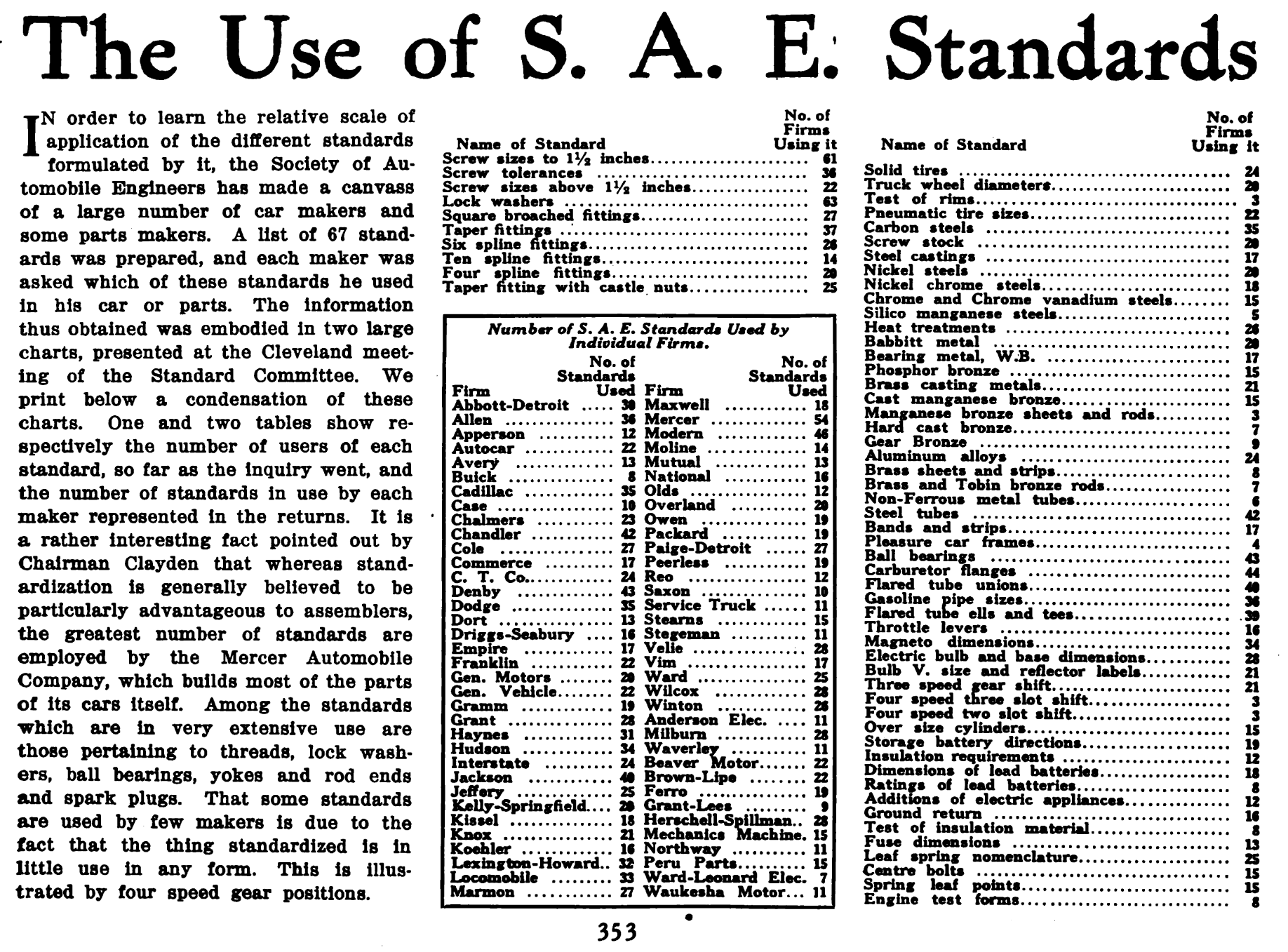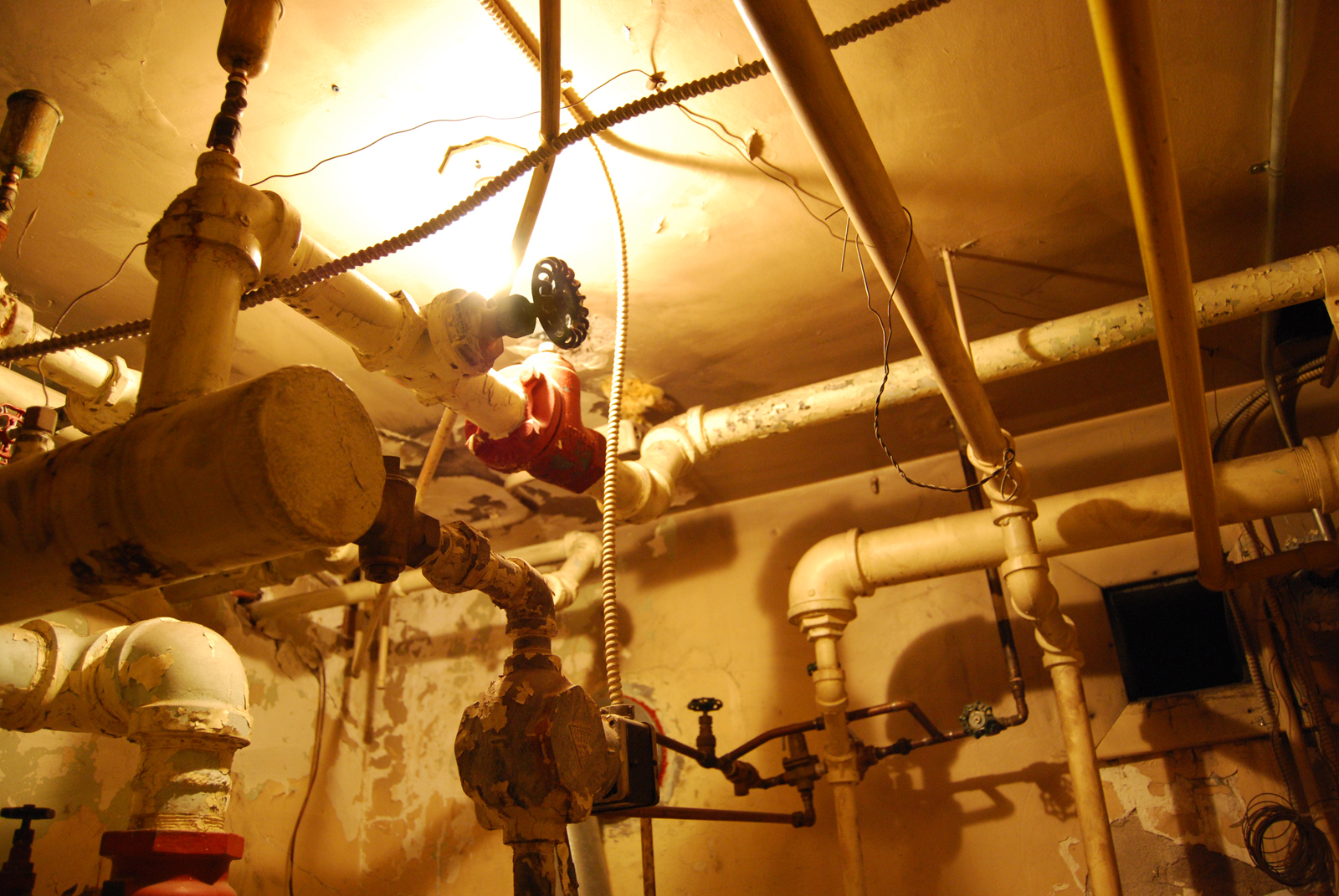|
AN Thread
The AN thread (also A-N) is a particular type of fitting used to connect flexible hoses and rigid metal tubing that carry fluid. It is a US military-derived specification that dates back to World War II and stems from a joint standard agreed upon by the Army Air Corps and Navy, hence AN. The Air Corps-Navy involvement is also the origin of the red/blue color combination that was traditionally used in the anodized finishing process. AN sizes range from -2 (dash two) to -32 in irregular steps, with each step equating to the OD (outside diameter) of the tubing in -inch increments. Therefore, a -8 AN size would be equal to -inch OD tube. However, this system does not specify the ID (inside diameter) of the tubing because the tube wall can vary in thickness. Each AN size also uses its own standard thread size. AN fittings are a flare fitting, using 37° flared tubing to form a metal-to-metal seal. They are similar to other 37° flared fittings, such as JIC, which is their industri ... [...More Info...] [...Related Items...] OR: [Wikipedia] [Google] [Baidu] |
Flare Fitting
Flare fittings are a type of compression fitting used with metal tubing, usually soft steel, ductile (soft) copper and aluminum, though other materials are also used. In a flare fitting the tube itself is "flared" i.e. expanded and deformed at the end. The flare is then pressed against the fitting it connects to and is secured by a close-fitting nut that ensures that no leakage happens. Tube flaring is a type of forging operation, and is usually a cold working procedure. During assembly, a flare nut is used to secure the flared tubing's tapered end to the also tapered fitting, producing a pressure-resistant, leak-tight seal. Flared connections offer a high degree of long-term reliability and for this reason are often used in mission-critical and inaccessible locations. The tool used to flare tubing consists of a die that grips the tube, and either a mandrel or rolling cone is forced into the end of the tube to form the flare by cold working. The most common flare fitting standards ... [...More Info...] [...Related Items...] OR: [Wikipedia] [Google] [Baidu] |
SAE International
SAE International is a global professional association and standards organization based in Warrendale, Pennsylvania, United States. Formerly the Society of Automotive Engineers, the organization adopted its current name in 2006 to reflect both its international membership and the increased scope of its activities beyond automotive engineering and the automotive industry to include aerospace and other transport industries, as well as commercial vehicles including autonomous vehicles such as self-driving cars, trucks, surface vessels, drones, and related technologies. SAE International has over 138,000 global members. Membership is granted to individuals, rather than companies. Aside from its standardization efforts, SAE International also devotes resources to projects and programs in STEM education, professional certification, and collegiate design competitions. History In the early 1900s there were dozens of automobile manufacturers in the United States, and many more w ... [...More Info...] [...Related Items...] OR: [Wikipedia] [Google] [Baidu] |
United States Standard Thread
United States Standard thread (USS thread), also known as Sellers Standard thread, Franklin Institute thread and American Standard thread, is a standard for inch based threaded fasteners and washers. The USS standard is no longer supported. It, together with the SAE fastener standard, was incorporated into the Unified Thread Standard. However, the term, ''USS'', continues to be used occasionally today to describe inch based threaded fasteners with a coarse thread pitch and inch based washers that are a little bit larger than the corresponding SAE washer. The Unified Thread Standard uses the term UNC (Unified Coarse) to describe a fastener that previously would have been designated USS and UNF (Unified Fine) to describe a fastener that would have previously been designated SAE. Thread form The thread form is defined by flats at the tip and root of the thread form. This flat length is defined as the pitch divided by eight. The thread depth, which is from flat to flat is 0.6495 ... [...More Info...] [...Related Items...] OR: [Wikipedia] [Google] [Baidu] |
National Pipe Thread
American National Standard Pipe Thread standards, often called national pipe thread standards for short, are United States national technical standards for screw threads used on threaded pipes and pipe fittings. They include both tapered and straight thread series for various purposes, including rigidity, pressure-tight sealing, or both. The types are named with a full name and an abbreviation, such as NPT, NPS, NPTF, or NPSC. MIP is an abbreviation for male iron pipe, and FIP is an abbreviation for female iron pipe. Outside North America, some US pipe thread sizes are widely used, as well as many British Standard Pipe threads and ISO 7–1, 7–2, 228–1, and 228-2 threads. Types The various types are each named with an abbreviation and a full name, as follows: Uses Threaded pipes can provide an effective seal for pipes transporting liquids, gases, steam, and hydraulic fluid. These threads are now used in materials other than steel and brass, including PTFE, PV ... [...More Info...] [...Related Items...] OR: [Wikipedia] [Google] [Baidu] |
Flare Fitting
Flare fittings are a type of compression fitting used with metal tubing, usually soft steel, ductile (soft) copper and aluminum, though other materials are also used. In a flare fitting the tube itself is "flared" i.e. expanded and deformed at the end. The flare is then pressed against the fitting it connects to and is secured by a close-fitting nut that ensures that no leakage happens. Tube flaring is a type of forging operation, and is usually a cold working procedure. During assembly, a flare nut is used to secure the flared tubing's tapered end to the also tapered fitting, producing a pressure-resistant, leak-tight seal. Flared connections offer a high degree of long-term reliability and for this reason are often used in mission-critical and inaccessible locations. The tool used to flare tubing consists of a die that grips the tube, and either a mandrel or rolling cone is forced into the end of the tube to form the flare by cold working. The most common flare fitting standards ... [...More Info...] [...Related Items...] OR: [Wikipedia] [Google] [Baidu] |
O-ring Boss Seal
An o-ring boss seal is a technique for joining two fluid-carrying pipes, hoses, or tubing. In an o-ring boss (abbreviated ORB) system, a male- threaded part is inserted into a female-threaded part, providing a mechanical seal. This system differs from others in that a nut is tightened over an o-ring in a chamfered area, creating a fluid-tight seal. Application This system is used frequently in hydraulics, although it has been applied to other systems including compressed air systems and vacuum pump A vacuum pump is a type of pump device that draws gas particles from a sealed volume in order to leave behind a partial vacuum. The first vacuum pump was invented in 1650 by Otto von Guericke, and was preceded by the suction pump, which dates to ...s, such as many Robinair pumps, in which the intake tee has an o-ring boss seal on the bottom. The ORB system can be confused with other connection systems, such as NPT. While threads of different connectors sometimes fit (although ... [...More Info...] [...Related Items...] OR: [Wikipedia] [Google] [Baidu] |
Threaded Pipe
A threaded pipe is a pipe with screw-threaded ends for assembly. Tapered threads The threaded pipes used in some plumbing installations for the delivery of gases or liquids under pressure have a tapered thread that is slightly conical (in contrast to the parallel sided cylindrical section commonly found on bolts and leadscrews). The seal provided by a threaded pipe joint depends upon multiple factors: the labyrinth seal created by the threads; a positive seal between the threads created by thread deformation when they are tightened to the proper torque; and sometimes on the presence of a sealing coating, such as thread seal tape or a liquid or paste pipe sealant such as pipe dope. Tapered thread joints typically do not include a gasket. Especially precise threads are known as "dry fit" or "dry seal" and require no sealant for a gas-tight seal. Such threads are needed where the sealant would contaminate or react with the media inside the piping, e.g., oxygen service. Ta ... [...More Info...] [...Related Items...] OR: [Wikipedia] [Google] [Baidu] |
Thread Standards
Thread(s) may refer to: Objects * Thread (yarn) ** Thread (unit of measurement), a cotton yarn measure * Screw thread, a helical ridge on a cylindrical fastener * Thread, an individual strand of spider silk Arts and entertainment * ''Thread'' (film), 2016 Greek film * ''Threads'' (1932 film), directed by G. B. Samuelson * ''Threads'' (1984 film), apocalyptic nuclear war drama film * ''Threads'' (2017 film), animated short film * "Threads" (''Stargate SG-1''), a Stargate SG-1 episode * "Thread", a poem by Patti Smith from '' Babel'' * Thread, a lethal spore in the Dragonriders of Pern universe * ''The Threads '', Indian National Film Award for Best Non-Feature Animation Film winner * '' Project Runway: Threads'', spinoff television series with child contestants Music * ''Thread'' (album), by rock band Red Sun Rising * ''Threads'' (Battlefield Band album) * ''Threads'' (David S. Ware album) * ''Threads'' (Now, Now album) * ''Threads'' (Temposhark album) * ''Threads'' ( ... [...More Info...] [...Related Items...] OR: [Wikipedia] [Google] [Baidu] |
Piping
Within industry, piping is a system of pipes used to convey fluids (liquids and gases) from one location to another. The engineering discipline of piping design studies the efficient transport of fluid. Industrial process piping (and accompanying in-line components) can be manufactured from wood, fiberglass, glass, steel, aluminum, plastic, copper, and concrete. The in-line components, known as fittings, valves, and other devices, typically sense and control the pressure, flow rate and temperature of the transmitted fluid, and usually are included in the field of piping design (or piping engineering), though the sensors and automatic controlling devices may alternatively be treated as part of instrumentation and control design. Piping systems are documented in piping and instrumentation diagrams (P&IDs). If necessary, pipes can be cleaned by the tube cleaning process. ''Piping'' sometimes refers to piping design, the detailed specification of the physical piping layo ... [...More Info...] [...Related Items...] OR: [Wikipedia] [Google] [Baidu] |
Plumbing
Plumbing is any system that conveys fluids for a wide range of applications. Plumbing uses piping, pipes, valves, piping and plumbing fitting, plumbing fixtures, Storage tank, tanks, and other apparatuses to convey fluids. HVAC, Heating and cooling (HVAC), Sewerage, waste removal, and Drinking water, potable water delivery are among the most common uses for plumbing, but it is not limited to these applications. The word derives from the Latin for lead, ''plumbum'', as the first effective pipes used in the Sanitation in ancient Rome, Roman era were lead pipes. In the developed world, plumbing infrastructure is critical to public health and sanitation. Boilermakers and pipefitters are not plumbers although they work with piping as part of their trade and their work can include some plumbing. History Plumbing originated during ancient civilizations, as they developed public baths and needed to provide drinking water, potable water and sewerage, wastewater removal for large ... [...More Info...] [...Related Items...] OR: [Wikipedia] [Google] [Baidu] |




